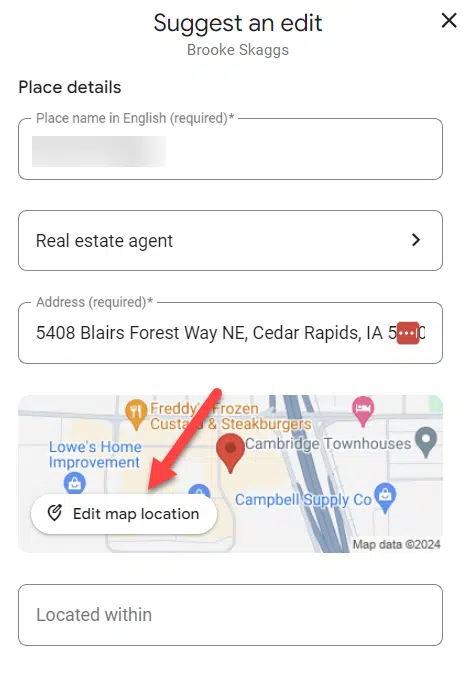Like any marketing and advertising channel, SEO should be budgeted for. However, creating an SEO budget isn’t as simple as allocating a set monthly amount.
To properly invest in organic search, you need a strategic plan backed by a comprehensive budgeting process. Without clearly defined goals, assessing website needs, and mapping resource requirements, you risk wasting time and money.
This article tackles the key steps for budgeting SEO in a way that sets your efforts up for success.
The ideal SEO budget depends on your needs
Budgeting, like auditing and reporting, may not directly boost impressions, rankings, clicks, or conversions in search, but it’s a vital element for any successful SEO campaign.
For the types of clients and work that my team does, it is nearly impossible to do SEO properly and completely without working through a budgeting process.
A red flag for me is when someone mentions another agency quickly dictating SEO spending. Similarly, if a brand has a fixed budget but can’t explain its origin, it raises concerns.
As you plan your budget, note that there are both hard and soft costs beyond those directly involved with SEO.
Create your strategy and plan
Before jumping into SEO tactics, you must start with a strategy and planning process.
The biggest hurdle to properly investing in or controlling costs within SEO efforts is the lack of a defined plan.
On top of AI changing how we do things and how our users find our content, there are too many moving parts we need to account for, including technical, on-page, and off-page elements.
Within your strategy and planning process, you need several steps to allow you to have a full picture of resources and activities to set your budget.
Know your KPIs and ROI
Establish an objective measure of what success is for your campaign. This involves knowing:
Without understanding these things, you can’t determine if your budget is too small or large (beyond the law of diminishing returns) or how it scales as you flex it up or down.
Remember, though, we’re not doing advertising so we won’t see immediate returns from the scaling or flexing.
Determine how aggressive you want to be
If you can see ROI connected with your SEO goals, you can start thinking about how much you want to pull the levers of speed and scale.
- Speed is how fast you want to see the results.
- Scale is how wide and broad you might want to go.
Want to maximize positioning and visibility for your full funnel? Want to do it as quickly as possible? That is going to take a larger investment.
Dig deeper: How to structure people operations to scale SEO success
Identify website and IT constraints
Website issues or limited resources often slow down SEO progress.
In a number of cases, a larger budget could have helped us overcome the constraints of a fully booked development team by building a new site or bringing in additional resources.
Constraints related to development sprints and cycles can include things as basic as being unable to implement title tags or more complex, like addressing schema, page experience performance, or technical indexing issues.
In essence, understanding your resources is crucial. Before diving into an SEO plan, assess factors like:
- Page experience.
- Technical issue resolution.
- Content scaling.
- UX improvement.
Conduct audits now to anticipate challenges and uncover potential hidden costs.
Scope your content needs
Content creation is a core activity for SEO.
It is important to optimize existing, evergreen content or consistently create new pieces as part of a thought leadership strategy.
I know some SEOs who wear a content writer hat and are multi-talented. Even the most talented people have trouble getting everything done wearing multiple hats.
SEO is big enough on its own. In most cases, someone else without SEO in their title is writing copy.
Is this person internal on your team or an external resource? What do they cost?
That can be pretty variable based on how aggressive you want to be and how big the initial lift will be.
Understand legal, compliance and review cycles
Another fun barrier when you have everything planned out for SEO is the level of review needed by any legal, compliance or approval teams.
This can impact budgeting when it comes to the number of reviews, revision cycles and even the speed and scale at which you can create content, make web updates, and get SEO work done.
Map out internal and external resources
With a full view of your strategy coming into focus, you can map out a plan of tactics your timeline, and hopefully have audited enough aspects to understand where you need help within and outside of SEO functions.
If you have an agency working with you, they likely can cover many or most of the resource functions. If you have a mix of internal and external resources, you need to understand the costs of both.
The costs for internal resources can be a little harder to track down if you have in-house teams and don’t know what the true cost of a fraction of an employee’s time is.
- For internal resources, time and other constraints must be considered risk factors to determine if you need to hire more full-time resources or find contractors to fill gaps.
- For external resources, you want to have a full understanding of costs and scopes and to make sure that you have all SEO needs covered. The point of budgeting is not to be surprised down the road with new costs or needs messing up your projections and ROI math.
Get the daily newsletter search marketers rely on.
Match the budget to your plan
You should now understand how SEO can be profitable and what resources you need to get it done.
Agency and/or in-house resources can include:
- SEO strategist(s)/tactician(s)
- UX designer(s), developer(s)
- IT
- Content strategist(s)/writer(s)
- Legal/compliance
- Stakeholders, approvers
Hopefully, the math you need to do isn’t too complex, and you don’t have too many unknowns or holes in your budget.
Sometimes, you can’t know it all upfront and must move forward. But it’s good to know potential returns and costs so you can do the important ROI math and start your plan.
Ongoing budget management
The constant in SEO and digital marketing is change.
Adaptability and agility are essential as AI impacts industries and your company navigates product updates, competitive shifts, and changes in consumer behavior or search engine algorithms.
That’s on top of uncovering some hidden resource needs or issues. A website bug you didn’t find when auditing? Not able to get the resources you thought you had up front? Is someone on the team leaving their role?
I could keep going, but my point is that you can’t set and forget it. You also need to manage the budget to have accountability within the plan, the resources working toward it, and the measurement of KPIs toward ROI.
Maximize your investment with a strategic SEO budget
In the absence of planning, it is hard to budget for SEO. Paying a provider or a single in-house salary to do everything SEO can seem like a single cost and a simple solution.
However, as I unpacked things done by people without SEO in their title or not within their complete control, there will be other costs.
The budgeting process is critically linked up with your strategy and planning process to know all costs, how you make money, and not waste years, plus thousands of dollars, not to see the return you expect on that investment.
Opinions expressed in this article are those of the guest author and not necessarily Search Engine Land. Staff authors are listed here.




